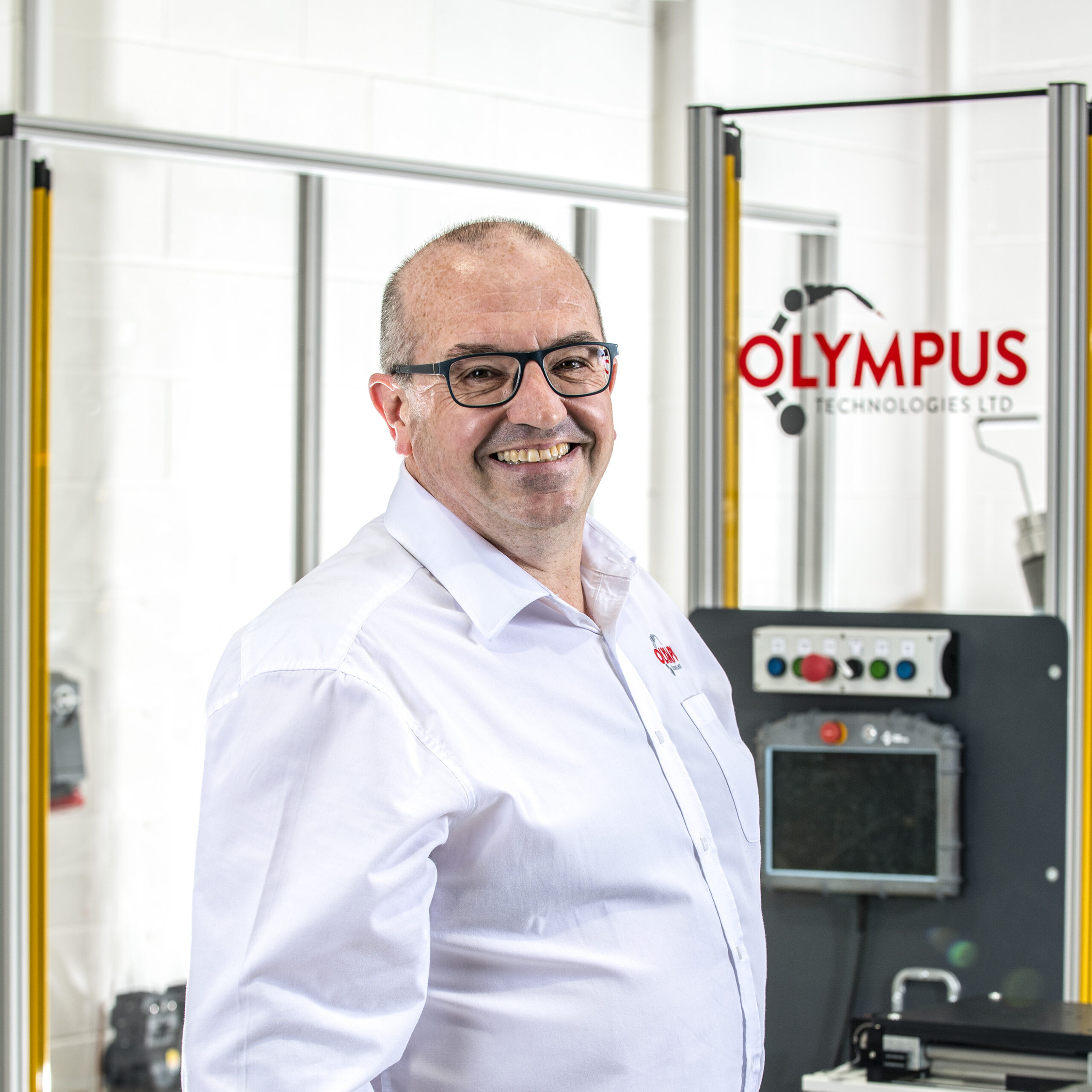Traceability that pays back in real production
Imagine a safety recall across thousands of manufactured products, yet no reliable way to trace a faulty component to its source.
The impact is financial, reputational, and operational.
In regulated industries such as aerospace, automotive, and medical manufacturing, that risk can be fatal to a business.
Modern quality requirements and global supply chain complexity make identification and traceability essential. That is why laser marking and permanent part IDs are becoming a standard cost effective solution for manufacturers that value quality control, compliance, and measurable ROI.
This article covers what permanent IDs are, where they fit in the manufacturing process, why laser technology improves total quality and supply chain visibility, how to build a business case, and how Olympus Technologies delivers automated laser marking cells that integrate with your production line.
What permanent part IDs are and why they matter
A permanent part ID is a durable, machine readable marking applied directly to the material surface.
It can take the form of serial numbers, Data Matrix, QR, or barcodes.
Unlike inkjet or adhesives, direct part markings withstand harsh environments, including heat, abrasion, and chemical exposure.
Businesses rely on them to:
- Track raw materials, batches, and processes from first cut to final ship
- Enable recall readiness and faster root cause analysis of defective products
- Improve management of inventory across the supply chain
- Protect against counterfeit components and unauthorised methods
In sectors such as food, automotive, and aerospace, durability, integration with software and machines, and data accuracy are non negotiable.
Traditional techniques struggle to create consistent marks at speed. Laser engraving and etching provide repeatable accuracy with minimal maintenance, which is why permanent part ids that pay back laser marking cells is more than a phrase.
It is a real-world outcome for companies that invest in the right system.
Where marking fits in the manufacturing process
Successful traceability works across every stage of the manufacturing process.
- Raw materials. Validate inbound quality, supplier compliance, and controls.
- In process. Track batches through machining, forming, coating, and test.
- Post assembly. Link components to the final unit.
- End of line. Verify completion before dispatch and capture data.
- Service. Support warranty, field repair, and part replacement.
Embedded marking systems do this work without interrupting flow.
Olympus Technologies helps determine optimal positions for marking and verification, then connects machines, equipment, vision, and software so IDs are marked, measured, and matched to the right records in real time.
Quality control and compliance
When issues occur, time matters. Laser marked IDs let teams isolate defects to a specific process, machine, or shift. Benefits include:
- Reliable audit trails for ISO, FDA, and automotive regulations
- Live analytics through SPC, MES, and ERP integration
- Faster incident response across departments and sites
By placing critical data on the part itself, organisations avoid blind spots in databases and operations. Compliance becomes visible, physical, and verifiable on the product.
Laser marking technology explained
Laser marking is a non contact, high precision process that uses focused light to engrave, etch, or anneal. It requires no consumables and offers repeatable accuracy at speed.
Compatible materials include:
- Metals such as steel, aluminum, and titanium
- Plastics, including food grade polymers
- Glass, rubber, and coated surfaces
Laser excels at creating consistent marks under variable conditions, surviving paint, blast, or heat, and running quickly in automated production.
It connects cleanly to MES, vision, and robotics. Olympus Technologies builds complete solutions that combine a marking system, robot handling, vision inspection, and software to automate marking and verification end to end.
From planning to integration
A structured path reduces risk and shortens time to value.
- Assess needs. Define traceability, quality, and compliance goals.
- Specify marks. Choose serial numbers, QR, or 2D Data Matrix to match your industry.
- Select equipment. Match machine, optics, and environment to materials and throughput.
- Install and integrate. Align with production line controls, vision, and data systems.
- Validate and train. Confirm readability, operator safety, and personnel readiness.
Key factors include surface condition, operations speed, controls interface, and data models. Olympus uses simulation and pre validation to ensure your company can obtain repeatable results from day one.
Real world use cases
- Metal fabrication. Apply IDs before coating on structural steel so marks survive finishing.
- Plastics. Create traceable IDs for the food market with clean, legible marking.
- Rubber and composites. Support aerospace and automotive regulations with resilient IDs.
- End of line packaging. Mark units before QA or palletisation for full supply chain visibility.
Example. A heavy industry manufacturer implemented an Olympus robotic marking cell and eliminated mislabels. Defects fell, response times improved, and marketing claims around quality were backed by real data.
Cost savings and ROI
Permanent identification prevents errors and unlocks savings in multiple areas.
| Metric | Without permanent ID | With laser marked part | Typical improvement |
|---|---|---|---|
| Defect tracking time | Hours or days | Minutes | 80 to 90 percent faster |
| Scrap and rework | High | Low | Up to 70 percent reduction |
| Consumables cost | Labels and ink | Minimal | 100 percent saving on labels |
| Audit preparation | Manual collection | Real time automatic | 50 to 75 percent time saved |
| Recall risk | Entire batch | Isolated components | Major risk reduction |
Olympus accelerates payback with modular, reusable cells that scale across families and processes. The result is lower total cost of ownership and faster return on investment.
Best practice for long term success
- Align part identification with quality and compliance goals
- Choose laser technology for the material and environment
- Validate readability across the full lifecycle, including coating and service
- Integrate MES, ERP, and vision so marks match your digital record
- Train personnel on safe methods and daily maintenance
- Monitor markings and data quality over time
Olympus provides ongoing support, software updates, and inline inspection so your solutions remain effective in the future.
Why now is the time to invest
Regulations are tightening, customers expect proof of quality, and global supply chains demand better management of materials and processes.
Investing in laser marking is not just a purchasing decision. It is a strategic move that improves operations, increases precision, and reduces costly errors.
Olympus Technologies delivers scalable, fully integrated laser marking cells that address compliance today and prepare your business for tomorrow.
FAQs
How do permanent part IDs improve traceability in manufacturing
They create a unique, durable ID on every unit, which lets you track components, batches, and processes across the entire manufacturing process. This improves supply chain visibility, reduces defects, and speeds root cause analysis.
What makes laser marking a cost effective solution
Laser systems remove label and ink costs, improve precision, and raise uptime. Integrated on the production line, they shorten audits and recalls, and reduce scrap from unreadable marks.
Can laser marking be used on plastics, metals, and other materials
Yes. It works on plastics, steel, aluminum, glass, and rubber, and adapts to many industries, including food, automotive, and medical.
How can companies ensure successful integration of a marking system
Assess material compatibility and throughput first. Then select the right equipment, plan integration with existing machines and software, and train personnel. Olympus Technologies supports specification, installation, validation, and long term support.














